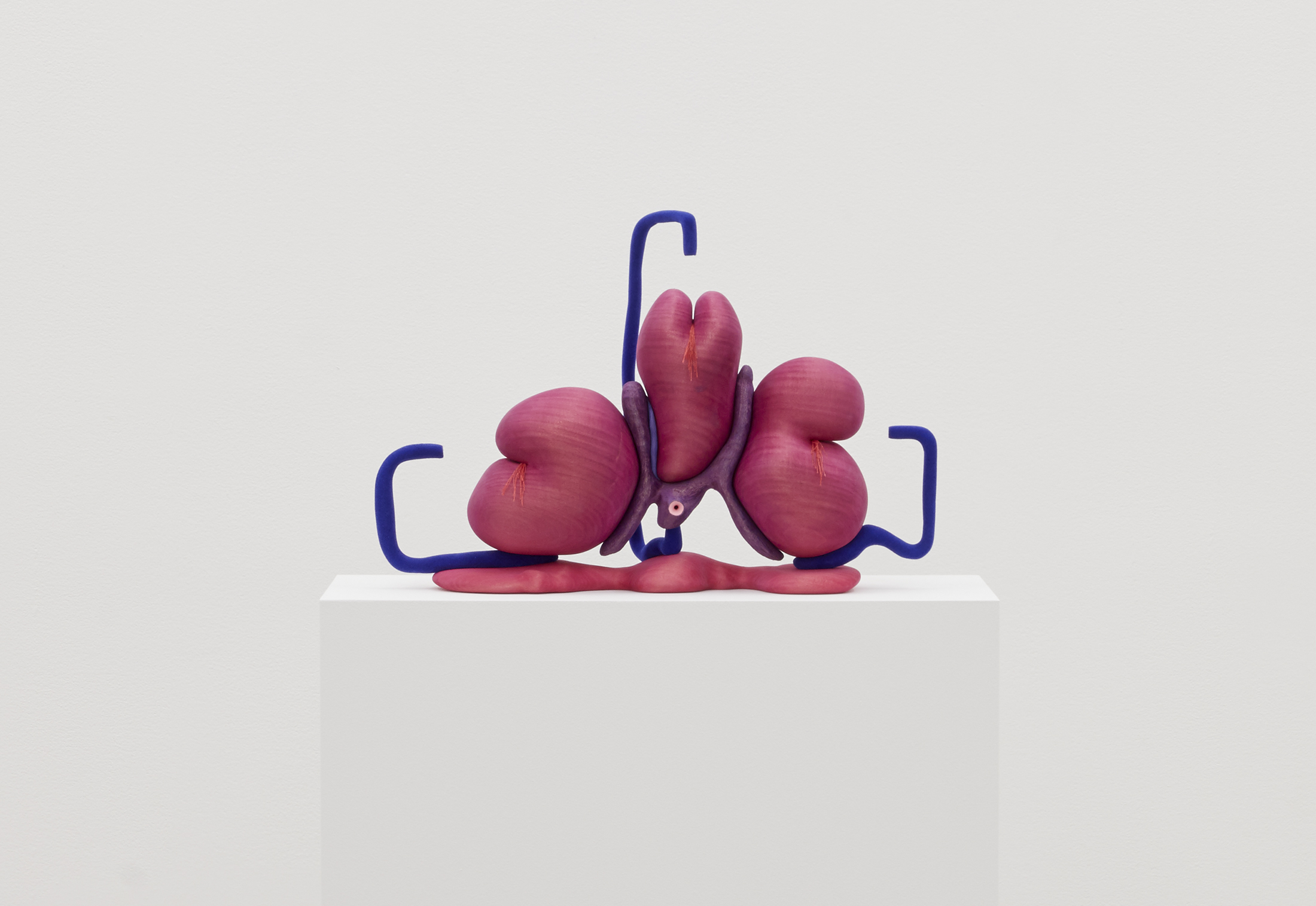Casey Kaplan

Artforum | Matthew Ronay
By Lloyd Wise
March 2022
Perhaps it’s his artworks’ eye-popping colors, antiseptic corporeality, or intractable otherness—or, for that matter, the difficulty of speaking about abstraction to begin with—but something leads viewers of Matthew Ronay’s carved-basswood sculptures to consider them initially as products of citation: as accumulations of formal motifs or references that the spectator is tasked with identifying. Ren and Stimpy, “Cow Tools,” Frederick Kiesler’s biomorphic Surrealism, anatomical models in the urologist’s office, Yves Tanguy, undersea coral. And while dutifully surmising such “influences,” real or not, has its pleasures, it can also be limiting (some might call it pseudomorphism), telling us more about the beholder than about the artist himself and revealing little of what these objects are and what they’re trying to achieve, domesticating their power.
Fortunately, Ronay’s exhibition of new work at Casey Kaplan this past fall short-circuited such readings thanks to an artist statement that—uncommonly, insofar as the genre goes—did much to detail the rich internal pressures that drive the Kentucky-born, New York–based sculptor’s processes of creative becoming. No Pinterest board here: Ronay’s motivations are squarely psychological, shaped by an opaque matrix of prelinguistic drives and compulsions that are as psychic as they are bodily. The artist begins by explaining an additive urge—to “combine . . . add . . . sequence”—that he says “washes over me like restless leg syndrome.” He describes an interest in “ligatures,” in letting his sculptures touch one another as they have always touched themselves, and in “binding or constricting a body or thing.” He refers to the concept of “tactile confirmation”—arrived at via a misquote of Carolee Schneemann—in which physical contact becomes a means of stilling the anxiety and the feelings of political powerlessness that become so intense when one is alone in one’s apartment, paralyzed by bad news. This impotence manifests somatically: One wants to, in Schneemann’s words, “scream for fifteen minutes or chop the sofa to bits.” Ronay rejoins: “I calm myself by making sculptures.”
If it is Ronay’s channeling of such gnawing psycho-bodily drives that gives shape to these objects, it also affects his audience’s experience of them. When we observe the work, a whole litany of filthy sensations—disgust, revulsion, queasiness, discomfort, dis-ease, panic, wonder, and awe—come to the surface: the itch you can’t scratch. The hole you can’t fill. The touch that’s nearly consummated but isn’t, quite. Fornax, 2021, exploits the folk-internet invention of tryophobia, the “fear of holes” popularized on shock sites and forums in the mid-2000s. (Think: a lotus pod Photoshopped to a cheek, insect eggs hatching from the skin.) Such is the discomfiting betweenness that Julia Kristeva was referring to when she talked about the abject, and the ontological instability of inside-but-not, touching-but-not, is a quality that saturated every piece in the show. Take The Lobes, 2020, in which turgid midnight-blue tubes point at kidney-shaped nodes from whose folds sprout, brilliantly, pubic strands of pink thread; or the freshly popped pustules in Filterer, 2021. The works also contained more explicitly Freudian devices, as in Torso, 2020, the most figurative work here, with its cylindrical and degloved genital organ, or Pluralizer, 2021, comprising a turd strapped, revoltingly, to a magenta appendage.
Ronay’s slick, visceral objects may seem to parallel the explosive body horror of 1990s abject art (e.g., works by Sarah Lucas, Paul McCarthy, Cindy Sherman), yet in mood they could not be more different. His lapidary offerings possess a stillness, a quiet intensity, that’s also a metonym for a certain kind of subject: someone who’s stuck inside, freaking out, who needs to feel something.
Read more at Artforum.com or in the printed March 2022 issue of Artforum.
Image: Matthew Ronay, The Lobes, 2020, basswood, dye, gouache, flocking, plastic, steel, cotton, 11 × 16 1/2 × 5″